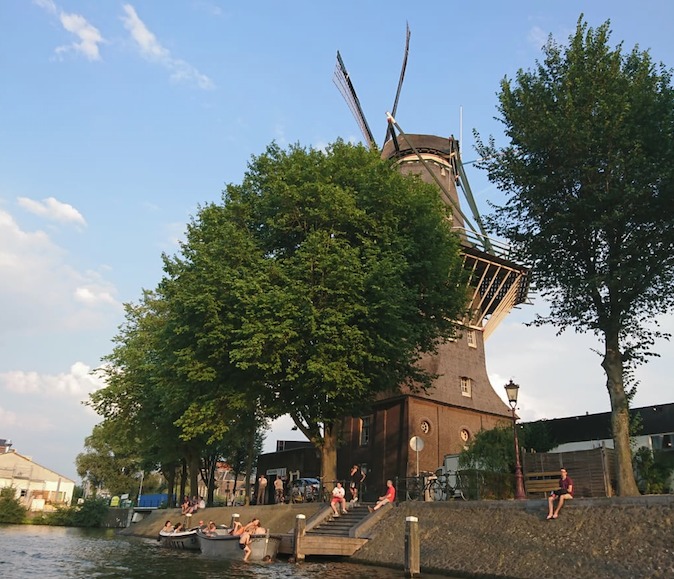Not so wild: blue algae is taking over natural pools and rivers

Safety warnings have gone out for some 40 official wild swimming locations in Dutch waters because of blue algae, and two are out of bounds altogether.
Blue algae, a bacterium which can lead to nausea, diarrhea and rashes, feeds on nitrogen, carbondioxide and sunshine, all of which are in plentiful supply in the Netherlands.
Experts said that swimmers must use their common sense and avoid taking the plunge if the water has a blue, green, brown or red oily layer.
At another 42 locations, swimming should be explicitly avoided because of bad water quality, including the presence of faecal bacteria, which can cause stomach upsets. Other dangers include PFAS and the razor-sharp Japanese oysters.
Swimmers can get the latest information on water quality on monitoring website zwemwater.nl and can turn for advice to the water boards’ Zwemwaterapp.
The two places where swimming is banned are a natural pool at holiday camp De Betteld in Gelderland, which was found to have “extremely high PFAS levels” and It Nanneveld in Friesland, where building activities make it unsafe to swim.
Dutch wild swimming water quality is among the worst in Europe, figures from the European Environment Agency have shown. One of the reasons is that more locations are inland and can be all but stagnant, allowing bacteria to proliferate.
Thank you for donating to DutchNews.nl.
We could not provide the Dutch News service, and keep it free of charge, without the generous support of our readers. Your donations allow us to report on issues you tell us matter, and provide you with a summary of the most important Dutch news each day.
Make a donation